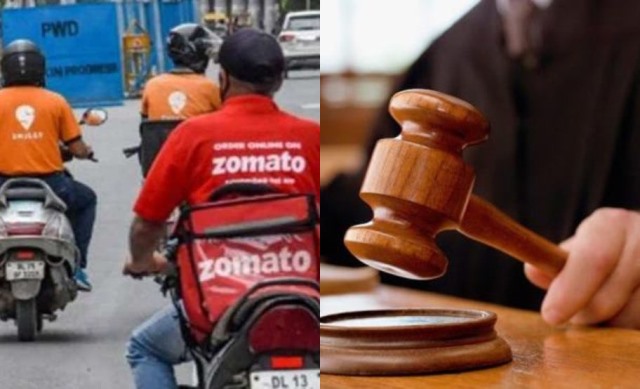Prem Prakash (name changed), a ‘delivery partner’ with Zomato in Lucknow, says his back-breaking work entails covering a minimum of 100 km every day on a motorbike. His story:
Before the 2020-21 pandemic days I was working as a marketing executive with a FMCG company. Covid and lockdown forced the company to limit its operations and I lost my job. It wasn’t a very high-paying job but it was comfortable enough. With few opportunities available, I took up the role of ‘Delivery Partner’ with app-based food delivery chain Zomato. In the last three and half years I have seen things going from bad to worse for delivery partners, as the competition gets tougher due to new entrants in the market.
When I joined Zomato, there was a gig system – hourly work and payment that gave me enough time to search and look for work elsewhere. However, for the past couple of years, the company has brought in several stringent norms that leave little space or time for me to spare. I work for 12 hours at a stretch and yet struggle to reach my target income of Rs 22,000 a month.
My income has two components – salary or retainership and commission per delivery. I therefore try to many delivery as possible, without missing any deadline. If you want a break in receiving orders, you need to inform the company two hours in advance. If there are frequent breaks, which is called cancellations, then your order ID may get suspended. Such punitive rules remind me of the days bonded labour in feudal India but there is little one can do about. We are always short of time.
Earlier, Lucknow city was divided into six zones and the deliveries were restricted to zonal partners. Now, due to competition, a delivery partner from can take up orders of another zone, irrespective of the distance and time. We have to match the 20-minute-or-free offers from pizza delivery outlets or Blinkit and Zepto. However, the company does provide relaxations in rules when weather is bad or a worker has health issues.
ALSO READ: ‘25% of My Income Goes Into My Bike’s Fuel Tank’
Every morning I wake up when my children have gone to school. I pack my meal and leave for work before 10 am. Thereto I continuously pick and deliver orders. There is little time to spend with family. Time is precious in my profession. It often requires driving fast and taking shorter routes to save time. What to say about my health, this work takes a toll on my motorbike too, which requires regular maintenance to remain in good working condition.
To make matter worse, we often face rude customers. At times there are bulk order, particularly during late evening hour, meant for small parties. There have been instances when patrons under the influence of alcohol at such parties misbehaved with me, complaining about late delivery and hurling abuses over something as little as a free sachet of chili flakes or oregano. There is little respect for Delivery Partners in our society. The company has provided us with a Panic Button on our phones but we prefer to take it in our stride.
My only worry is that I can work as a delivery person when I am young. It would not be possible to carry out with such punishing hours once I cross 35. Already my lower back pains at the end of every day. I must think about my future and sort it out sooner than later.
As told to Rajat Rai
For more details visit us: https://lokmarg.com/

